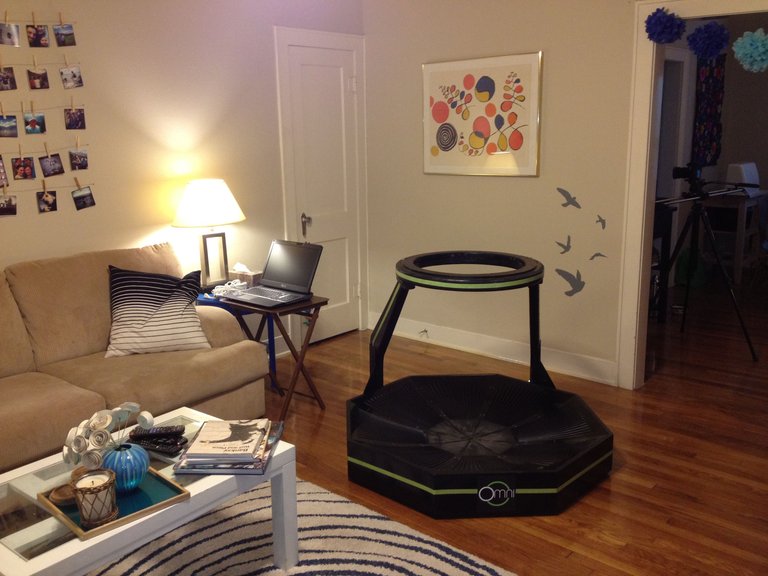Facing your fears may be the best way to extinguish a phobia – but it’s easier said than done. Some psychiatrists even claim that exposure therapy, which encourages a person to experience a steadily more frightening scenario, is unethical, given the stress and anxiety it produces. It can also be highly impractical – a person with a fear of flying can’t be expected to buy a plane ticket on a weekly basis.
To overcome these issues, psychologists and therapists are starting to turn to virtual reality exposure therapy. Instead of boarding a real plane, a person can simply put on a headset and a pair of headphones that, together, simulate the experience.
When I visited Cristian Sirbu at the University of West Virginia in Charleston, I tested his virtual reality set-up. His team have several different programs. One, for example, was designed for people with social anxiety associated with speaking in public. As I place the headset over my eyes, I see a group of around 20 people sitting before me. With the click of a mouse, Sirbu controls their responses – one moment they look bored and fidgety, the next they start booing and throwing scrunched-up paper at me.
I also tested out a program designed for people like me, with a phobia about heights. The set-up is much more basic – I’m in the lobby of a building with a water fountain at its centre, and little else. I have the option to travel up in a glass elevator to a walkway on a floor above. The graphics seem incredibly dated – they remind me of the first Tomb Raider videogame released in 1996 – and I certainly don’t feel the panic I would feel in the real situation, although a motion detector placed on my shoulder reveals that I start to sway as I get higher. Perhaps that is enough: in an unpublished study, Sirbu’s team have found that exposure to a virtual reality environment does help subjects to overcome their fears.
Other developments in virtual reality could have an even bigger impact. At a recent event, I tried out the Oculus Rift, a more sophisticated VR headset originally designed for immersive gaming (see video above). The developers had designed an immersive environment with a small room set atop a steep crag of rock. The challenge: cross a narrow, outdoor beam of wood to reach another crag. This would be an extreme challenge in terms of exposure therapy, and even people without phobias could be heard to scream as they fell. But set up for a tamer experience, it could have many advantages. For instance, it lets you try out the therapy in many different contexts, so I could train myself out of my fear of heights in virtual airports, shopping centres or railway stations, for instance, all places that might trigger a panic attack. With no one watching, it is less embarrassing that actually trying to overcome my fear in a public place – and with the right equipment, I could even practice regularly from the comfort of my home, potentially accelerating my progress.
Thanks



Im glad others have come to the same conclusion as I did when I tried hubby's VR headset.
I have a slight fear of heights and there was a scene in the VR world where it's looking down from the top floor of a building.
I tell ya now. I closed my eyes a few times for sure and I could feel my heart pumping, but at the same time I knew this is a great way to desensitise myself from this fear.
I'm planning on buying a whole system for my house.
I also love the idea of augmented reality. I haven't seen it for myself in real life, but I have been doig a lot of reading and it is helping doctors to train on augmented body parts to improve their skills in the operation theatre.
Both AR and VR are being used in such interesting ways. One of the coolest ways I've seen it used to help people is in reducing phantom limb pain - check it out.
Yes, this is one of the best current uses of VR.
I got a friend who puts on a VR headset whenever he needs to fly.
I find it very interesting I never even thought of it and then I started to realize this is a trend that is becoming more popular.